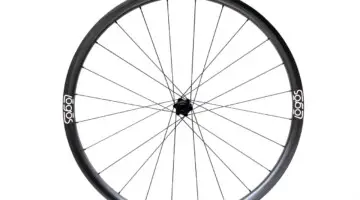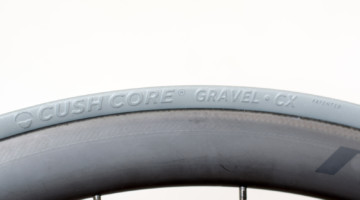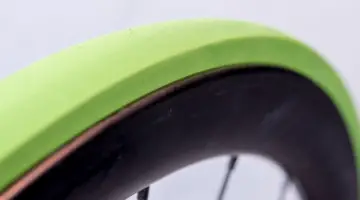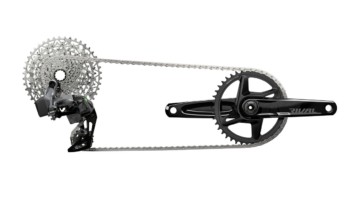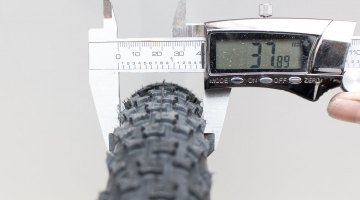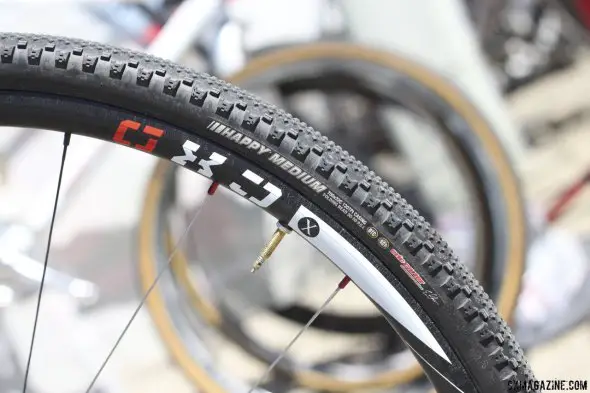
What changes will you make this year? The Redline team has switched from Challenge to Kenda tires for 2014, and Lindine may race tubeless on his Novatec wheels. © Cyclocross Magazine
Want to upgrade your wheels without dropping cash on a whole new wheelset, or not ready to go to tubulars? There are a few cost-friendly ways to increase speed and decrease your risks of flatting. For more budget-friendly upgrades, check out our Cyclocross Academy piece here.
In order of cost (and simplicity), our existing wheelset upgrades are:
- A wider inner tube. Many cyclocross bikes come with road-width inner tubes by default, or perhaps you threw a road-width tube in your cyclocross tire the last time you flatted. While doing so is an easy way to save weight, you’ve just dramatically increased your chances of pinch flatting. See Issue 9’s CXM Labs pinch flat test, available instantly via Uberflip. Wide (and heavy) inner tubes will let you ride lower pressures, and rolling faster over bumpy terrain or resisting pinch flats at the same pressure.
- Don’t want to add grams? Try a latex inner tube. Our CXM Labs test proved appropriate width inner tubes added pinch flat resistance, while improving suppleness of the ride. They’re not cheap, but cheaper than a new tire or new wheel.
- Get higher volume and/or more supple tires. A tire upgrade can yield major speed gains. Chances are your bike came with a tire that’s too narrow, not very supple, or with a tread not ideal for your riding conditions. Compared to bike or wheels, tires are relatively inexpensive but can vastly improve your ride, and if you have a clincher or tubeless setup, you can be ready to tackle any conditions that are thrown at you. Check out our tire reviews here, and make sure you’re subscribed to Cyclocross Magazine, where we review the latest treads.Higher volume tires will let you run lower pressure without flatting, and have more air volume to absorb the bumps. More supple tires (in general, higher TPI casing, or open tubulars) will also roll over bumpy terrain easier. Ideally, combine the two, and don’t worry about UCI or USA Cycling rules unless you’re racing a UCI race or Nationals. You’ll want to search for a higher volume tire than what came on your bike (think 35c instead of 32c unless you are racing UCI events). You’ll be able to run them at lower pressure, have less risk of pinch flatting, and have lower rolling resistance. You can also look for a more supple tire for better bump compliance. “Open tubulars” or higher TPI (threads per inch) often will mean a faster, more comfortable ride and better traction. Most bikes come with “universal” treads, and so if you find yourself often racing in mud, or in dry, fast hardpack conditions, you can look for a tread that better suits your course or conditions.
- Go tubeless. Run lower pressures while adding puncture resistance while (possibly) using your current wheels (and perhaps your current tires) if you are a DIYer. While there are a ton of great, dedicated tubeless wheels from companies like American Classic, Industry Nine, and NoTubes, and nine companies with tubeless cyclocross tires, there’s a good chance you can convert your current setup with tubeless rims trips or tape and sealant to make a reliable tubeless setup. See this multi-part tubeless article series as a start, make sure you get a copy of the upcoming Issue 25’s tubeless feature, and pay attention to the tire and rim combinations.
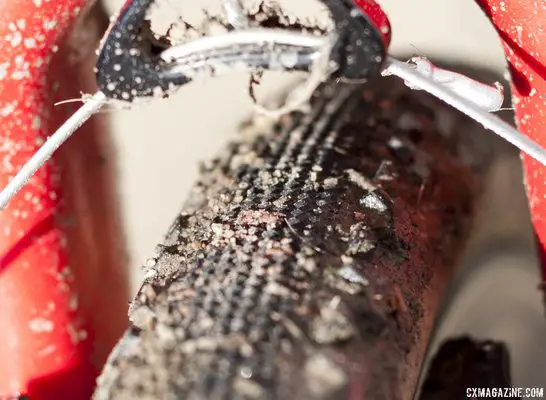
Tire choice can make all the difference. Challenge Chicane tubular tires with a file tread center and Limus side knobs gave Goguen the speed and grip to win the 2014 Junior Cyclocross National Championships. © Cyclocross Magazine
If you’ve got more cash to drop, getting a set of race wheels will add to the convenience and performance of just replacing tires. You can look for tubular or tubeless options, or just think about lighter rims for better acceleration and a smaller bruise on your shoulder from run-ups.























